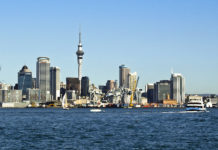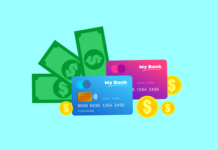By Harsimran Julka
AUCKLAND, MAY 14th: Even as the world is reeling from the effects of coronavirus shutting down shopping malls, schools, bars and restaurants, New Zealand has managed to curtail its spread for now, and is re-opening its shopping malls and markets, from this week onwards.
On Monday, NZ Prime Minister Jacinda Ardern announced a lifting of the lockdown measures imposed on the country on March 25th, when the cases were increasing by the hundreds every day. The country had just over a 100 cases with no deaths, before going into a full lockdown on March 25th.
From May 18th onwards, all bars, restaurants, schools, universities, shopping malls, and cinemas would re-open. Most shopping malls and salons were allowed to re-open from May 14th onwards.
All businesses which re-open will have to follow a social distancing rule of two metres.
This means that cinemas would have a lot of empty seats. McDonald’s and KFCs will have to have a two metre distance between each table for dine-in customers.
Funerals and mass gatherings including at home or in religious places are limited to just 10 people. Why 10? “Because If something goes wrong, that’s much easier to contain, much easier to contact trace,” explained Ardern. (Govt later back-tracked and allowed 50 people for funeral gatherings after protest from communities)

Public transport including domestic flights would re-open albeit international borders would remain closed.
But how did New Zealand manage to curtail the spread of the pandemic even as other nations have struggled with a large number of casualties.
Of course, geographical boundaries did help the country but here are 8 things New Zealand did, which other nations trying to control the pandemic, can learn from:
1.Shut borders early & Home-quarantine: The country created a temporary military facility where it would quarantine all positive cases. The country struggled with a limited bed capacity as it never had the healthcare infrastructure to deal with a pandemic.
Thus, starting March, it ordered all who tested positive for symptoms to self isolate at home.
Only severe cases were shifted to a hospital.
Of course, all patients would be monitored closely, and would get regular calls from the Ministry of Health asking about their well-being.
The country shut international borders including seaports and airports, but gave a 7-10 day notice to all its residents and citizens to return back to the country, even as it went into the lockdown.
The country had shut its borders to China, in February itself, despite the Chinese having a significant presence in the country’s immigrant population, owing to disturbing reports from Wuhan.
However the first few cases that emerged in the country were from the Middle East (Iran) and Europe (UK, Italy), indicating that the spread was no longer limited to China.
2. Testing and Contact Tracing: Anyone with symptoms would first have to get a letter from a general practitioner, recommending a test, due to the shortage of kits.
However, later testing became open to all. It was free of cost from day zero.
A positive test meant that all who came into your contact would also be tested.
Contact tracing and free testing was something that helped limit the spread.
As it turned out, a wedding, a college, a business conference, a bar and restaurant turned out to be clusters, and were sealed immediately.
3. Give Ample Notice to A Lockdown: The country managed to develop a graded level approach to a lockdown, similar to a one it has in disaster relief as it is prone to natural calamities on March 21st.
It developed jargons such as bubble-isation and social distancing and the Prime Minister encouraged its usage.
All people received an SMS and an emergency level flash on their screens alerting them on the date the country would be going into level 3 lockdown.
On March 23rd, it was almost a 3-day notice to the lockdown, which was enough for people to get back home from other cities, wrap-up businesses, pay vendors and stock any essentials or cooking gas if needed.

4. Give Wage Support To Employees/Employers: Even as the country went into a lockdown, the government announced that there would be some relief for businesses. As the markets and economy went silent, the ministries worked out a plan to support small businesses and their employees.
All businesses were given a weekly wage support per employee of about $585 for a period of three months, till the country would remain in some sort of lockdown, to curtail the pandemic.
The wage subsidy meant that people could pay their rents, buy groceries and medicines.
Purchasing power granted by the government to the public also meant that the economy would not stop.
Firing of employees was made illegal if a company had applied for a wage subsidy on behalf of an employee.
The wage support was also given to the self-employed including the plumbers, electricians, tutors, taxi drivers, food delivery executives, couriers, etc.
5. Regulate Landlords and Freeze Rents: Commercial and residential rent disputes were kept controlled. Renters were given a 60-day period in which they cannot be evicted even if they could not pay the rent. After which, a landlord can approach a tribunal to appeal against the renter. Rent increases were frozen.
In one case, a landlord who tried to move in his renters place, was arrested by the police and placed in a lodge, as he claimed to have none other place of his own.
The Prime Minister encouraged public shaming of such landlords, and invited their names to be put on a public website. However things did not reach that far, and most commercial realtors cooperated with tenants in order to avoid hurting their brand image.
6. Communicate With Public Daily: The daily joint presser during the lockdown from the Prime Minister and Director General of Health, achieved more eyeballs than on a fully packed national rugby match.
On some evenings, after putting her baby to sleep, the Prime Minister would hold a Facebook Live with the public and take questions, from the comfort of her living room couch, regarding the steps ahead for the nation.
Government started buying media ad space online and in print. It started propagating the message on what people were allowed to do. There were four levels of lockdown from 1-4 developed on March 21st. All people slowly started getting mailers in their letterboxes about what each alert level system meant for them.
The daily presser at 1 pm, by the Prime Minister, however kept the public informed on the next steps.
7. Impose Lockdown strictly with Fines: There were breaches of the lockdown where people going to the beaches or cycling. But they were dealt with fines by the police. In one instance a group of students playing cricket during lockdown were imposed a penalty running into several hundred dollars.
The health minister was caught cycling and snapped by a person with a smartphone. As his photo went viral on Facebook, the Prime Minister acted decidedly, demoting him to below the cabinet-ranks.
The lockdown helped. It controlled the spread of the virus, and those with symptoms were given ample time to rest and recover at home so as not to become super-spreaders of the disease.
This protected a large mass of the population in the island nation.

8. Decision-making based on expert models: The government asked epidemiologists, scientists and mathematical modellers to help out in decision making.
Each lockdown level was upgraded or downgraded only based on a report given by the Director General of Health and their staff, which consisted of several experts, including many University professors on epidemiology.
Of course, a few opposition politicians clamoured saying the lockdown would hurt the economy.
However, the broader population supported the government’s move as it saw the number of new cases declining every day.
On March 23rd, a lockdown level was suddenly upgraded two levels. The decision was largely based upon a signature campaign by scientists, and experts warning the government of severe consequences, if it did not.
At its peak the country had over 1500 cases. Post the month long lockdown, the cases have dropped to just about 2-3 new cases per day with a total of 21 casualties.












